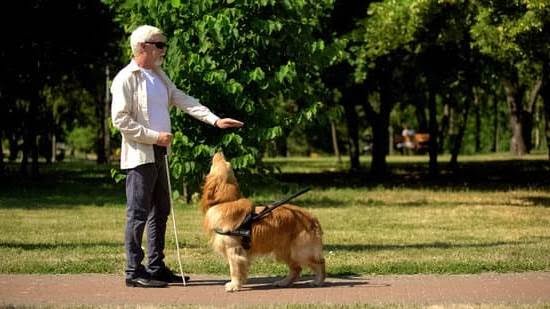Are you wondering how to train pet dogs to be well-behaved and obedient? Training your furry friend is not only important for their safety and well-being but also crucial for building a strong bond with them. In this article, we will explore the significance of training your pet dog and provide valuable tips and techniques for effective training.
Understanding your dog’s behavior and psychology is the first step towards successful training. By learning how your four-legged companion thinks and acts, you can tailor your training approach to suit their unique needs. From basic commands like sit, stay, come, and leave it to more advanced techniques such as heel, down, and roll over, we will guide you through the fundamental training methods that every pet owner should know.
Positive reinforcement vs. punishment is an essential aspect of dog training that requires careful consideration. We will discuss the most effective training methods that promote positive behavior in your pet while steering clear of harmful punishment tactics. Additionally, we will cover the use of training tools and equipment such as leashes, clickers, and treats to aid in the training process. Stay tuned for expert advice on addressing common behavior problems like barking, jumping, and aggression in your pet dog.
Understanding Your Dog’s Behavior and Psychology
Dogs also communicate through body language, vocalizations, and energy. It’s important to learn how to read your dog’s signals to understand their needs and emotions. For example, a wagging tail doesn’t always mean a dog is happy; it can also indicate nervousness or agitation. Understanding your dog’s body language will help you address any underlying issues that may be affecting their behavior.
In addition, understanding the psychology of learning in dogs is crucial for successful training. Dogs respond well to positive reinforcement techniques, such as using treats, praise, or play as rewards for good behavior. This creates a positive association with the desired behavior and encourages them to repeat it. On the other hand, punishment-based methods can lead to fear and anxiety in dogs, ultimately damaging the bond between you and your pet.
| Behavior | Characteristics |
|---|---|
| Separation anxiety | Dog displays distress when left alone |
| Aggression | Dog exhibits hostile behavior towards humans or other animals |
| Disobedience | Dog ignores commands or refuses to follow instructions |
Basic Training Techniques
When it comes to training your pet dog, basic obedience commands are essential for a well-behaved and mannered pet. These commands not only make your life easier but also ensure the safety of your dog and those around them. Here are some basic training techniques to help you teach your furry friend how to sit, stay, come, and leave it:
1. Sit: Teaching your dog to sit is often one of the first commands you will want to teach them. Start by holding a treat close to their nose and then slowly raise the treat above their head. As their head moves up, their bottom should lower down into a sitting position naturally. Once they are in that position, say “sit” and then give them the treat as a reward.
2. Stay: The ‘stay’ command is important for keeping your pet safe in potentially hazardous situations. Begin by commanding your dog to sit or lie down, then hold your hand out with the palm facing towards them while saying “stay.” After a few seconds of staying still, reward them with praise or a treat.
3. Come: The ‘come’ command is crucial for getting your dog’s attention and bringing them back to you when necessary. Use a leash at first and gently tug on it while saying “come.” Once they reach you, reward them with praise and affection.
4. Leave It: This command teaches your dog to ignore certain distractions or objects that could be harmful to them. Offer them a treat enclosed in your fist while saying “leave it.” Once they lose interest in trying to get the treat from your hand, say “take it” and open your hand for them to have access.
The key to successfully teaching these basic commands is consistency and positive reinforcement. Always use treats, praise, and affection as rewards when they obey the command correctly.
Now that you understand how to train pet dogs on these basic commands – sit, stay, come, and leave it – remember that patience is key when training any dog.
Advanced Training Techniques
Heel
Teaching your dog to heel is an advanced training technique that requires patience and consistency. The heel command is particularly useful when you are out for a walk or in a crowded place. To train your dog to heel, start by teaching them to walk on a loose leash.
Use treats and positive reinforcement to encourage the behavior you want, and gently redirect them when they pull on the leash. With consistent training, your dog will learn to walk calmly by your side without pulling.
Down
The “down” command is another valuable skill to teach your pet dog. This command can be helpful in situations where you need your dog to lie down calmly, such as at the vet’s office or during a grooming session. To train this command, start by asking your dog to sit, then lower a treat to the ground in front of them while giving the “down” cue.
As soon as their elbows touch the ground, reward them with the treat and plenty of praise. Repeat this process until they reliably respond to the “down” command.
Roll Over
Reward them when they complete the action and gradually add the verbal cue before giving the treat. With consistent practice, your pet dog will learn how to perform this adorable trick on command.
By using positive reinforcement and maintaining consistency, owners can effectively train their pet dogs in these advanced techniques. Understanding how dogs think and learn is crucial for success when training advanced commands like heel, down, and roll over.
Positive Reinforcement vs Punishment
When it comes to training pet dogs, there are different methods to consider. Positive reinforcement and punishment are two of the most common training techniques used by dog owners. Understanding the differences between these methods is crucial in determining which approach will be most effective for your furry friend.
Positive Reinforcement
Positive reinforcement involves rewarding your dog for exhibiting the desired behavior. This can be done through treats, praise, or even playtime. When your dog learns that good behavior results in a positive outcome, they are more likely to repeat that behavior in the future.
Punishment
Punishment, on the other hand, involves correcting undesirable behavior through various means such as verbal reprimands, using aversive tools like shock collars, or physical correction. While punishment may yield immediate results, it can also lead to fear, anxiety, and even aggression in some dogs.
Using positive reinforcement is widely considered to be the most effective and humane method of training pet dogs. By focusing on rewarding good behavior rather than punishing bad behavior, you can build a strong bond with your dog based on trust and respect. Studies have shown that dogs trained using positive reinforcement are more eager and willing to learn new behaviors compared to those trained using punishment-based methods.
Ultimately, choosing the right training method for your pet dog will depend on their individual temperament and the specific behaviors you want to address. When considering how to train pet dogs effectively, it’s important to prioritize their well-being and choose methods that align with their needs and personality.
Training Tools and Equipment
When it comes to effectively training your pet dog, having the right tools and equipment is essential. Here are some of the most commonly used items in dog training:
- Leashes: A leash is a vital tool for teaching your dog to walk politely on a leash, as well as for controlling their behavior during training sessions. There are different types of leashes available, including standard leashes, retractable leashes, and harnesses.
- Clickers: Clicker training is a popular method used to reinforce positive behavior in dogs. The clicker serves as a marker to signal to the dog that they have performed the desired behavior correctly. It is often paired with treats to create positive associations with specific actions.
- Treats: Treats are a valuable tool for motivation and reinforcement during training sessions. High-value treats such as small pieces of cooked chicken or cheese are often used to reward good behavior and encourage compliance with commands.
In addition to these tools, it’s also important to consider the type of collar you use for your dog, as well as any specialized equipment needed for specific types of training such as agility or obedience training. By using the right tools and equipment in combination with positive reinforcement techniques, you can effectively teach your pet dog new commands and behaviors while strengthening the bond between you and your furry companion.
Remember that while these tools can be helpful in training your pet dog, they should always be used in conjunction with patience, consistency, and understanding of your dog’s individual needs and learning style. With the right approach and resources, you can successfully train your pet dog using positive reinforcement methods that foster trust and cooperation between you and your beloved canine companion.
Addressing Common Behavior Problems
When it comes to training pet dogs, addressing common behavior problems such as barking, jumping, and aggression is essential for a well-behaved and obedient canine companion. These behaviors can be frustrating for both the dog owner and those around them, but with the right techniques and consistency, they can be effectively managed.
One of the key aspects of addressing these behavior problems is understanding the root cause. For example, excessive barking can be a result of boredom, anxiety, or territorial behavior. Jumping may stem from excitement or a lack of impulse control. Aggression can be triggered by fear, possessiveness, or even medical issues. Understanding why your dog is behaving a certain way will help in choosing the appropriate training approach.
Positive reinforcement is often the most effective method for addressing these common behavior problems in pet dogs. This involves rewarding good behavior with treats, praise, or toys to encourage your dog to repeat that behavior. For example, when training a dog not to bark excessively, rewarding moments of quietness can help them understand what is expected from them.
| Behavior Problem | Training Technique |
|---|---|
| Barking | Positive reinforcement – Reward moments of quietness with treats or praise |
| Jumping | Ignoring the jumping behavior and rewarding calm behavior instead |
| Aggression | Consulting with a professional trainer or behaviorist to address any underlying issues |
In addition to positive reinforcement techniques, consistent training and setting clear boundaries are crucial in addressing these common behavior problems. Developing a daily routine that includes regular exercise and mental stimulation can also contribute to managing these behaviors effectively.
It’s important for pet owners to be patient and understanding throughout the training process as it takes time for dogs to learn new behaviors and unlearn undesirable ones. With dedication and the right approach, pet owners can successfully address common behavior problems in their beloved dogs.
Training for Special Needs
Training a pet dog to become a service, therapy, or emotional support animal requires specialized techniques and skills. Service dogs are trained to assist individuals with disabilities such as visual impairment, mobility limitations, diabetes, and PTSD. Therapy dogs provide comfort and support to people in hospitals, nursing homes, schools, and other settings. Emotional support animals offer companionship and comfort to individuals with mental health conditions.
When training a pet dog for special needs roles, it is important to work with a professional trainer who has experience in this area. The training process involves teaching the dog specific tasks relevant to the individual’s needs, as well as socialization and behavior management in various environments.
For example, a service dog may need to learn how to guide their handler through obstacles or retrieve items, while a therapy dog must be comfortable interacting with strangers in different settings.
It is crucial for owners of special needs dogs to understand the legal rights and responsibilities associated with these roles. In the United States, the Americans with Disabilities Act (ADA) protects the rights of individuals with disabilities to be accompanied by their service dog in public places. However, emotional support animals are not granted the same level of access under the law.
It is important for owners to educate themselves on these regulations and ensure that their special needs dog receives proper training and certification. Overall, training pet dogs for special needs roles requires patience, dedication, and an understanding of each individual’s unique requirements.
Consistency and Patience
Patience is another essential element of effective dog training. Remember that learning new behaviors takes time, and not all dogs will progress at the same pace. It’s important to remain calm and patient during training sessions, as frustration can be counterproductive. If you find yourself getting frustrated, it’s best to take a break rather than continue with the training session.
In addition to consistency and patience, it’s also crucial to set realistic goals for your dog’s training. Start with basic commands like sit, stay, come, and leave it before moving on to more advanced techniques.
By building a strong foundation of obedience, you’ll create a solid framework for teaching more complex behaviors. And always remember that every dog is different, so be flexible in your approach and tailor your training methods to suit your pet’s individual needs.
By implementing these tips for consistency and patience into your training regimen, you’ll undoubtedly see progress in teaching your pet dog new behaviors. With dedication and a positive attitude, you can successfully train your beloved canine companion.
Conclusion
In conclusion, training your pet dog is not just about teaching them commands and tricks; it is about fostering a strong and healthy relationship built on trust and communication. Understanding your dog’s behavior and psychology is crucial in developing effective training techniques. By using positive reinforcement and consistency, you can create a well-behaved and happy companion.
It’s important to remember that the key to successful training lies in patience and persistence. Whether you are teaching basic commands or addressing specific behavior problems, consistency is key. Each interaction with your dog is an opportunity for learning, so it’s important to stay committed to the process. Remember that every dog is different, so what works for one may not work for another.
By investing time and effort into understanding how to train pet dogs effectively, you can enjoy the benefits of a well-trained companion for years to come. A well-trained dog will not only be a joy to be around but will also be safer in various situations. Ultimately, the bond you build through training will enhance your relationship and create a harmonious living environment for both you and your furry friend.
Frequently Asked Questions
What Are the 7 Commands to Train a Dog?
The seven commands to train a dog are sit, stay, come, down, heel, no, and leave it. These commands help establish control and communication between the dog and its owner.
How Do You Train a Dog for Beginners?
For beginners looking to train a dog, consistency is key. Start with basic commands like sit and stay, use positive reinforcement such as treats or praise, and be patient with the learning process. It’s also important to socialize the dog with other animals and people.
What Are the 5 Golden Rules of Dog Training?
The five golden rules of dog training are consistency, patience, positive reinforcement, understanding your dog’s needs and behavior, and proper timing when giving commands or corrections. Following these rules can lead to successful training outcomes for both the dog and its owner.

Welcome to the blog! I am a professional dog trainer and have been working with dogs for many years. In this blog, I will be discussing various topics related to dog training, including tips, tricks, and advice. I hope you find this information helpful and informative. Thanks for reading!





